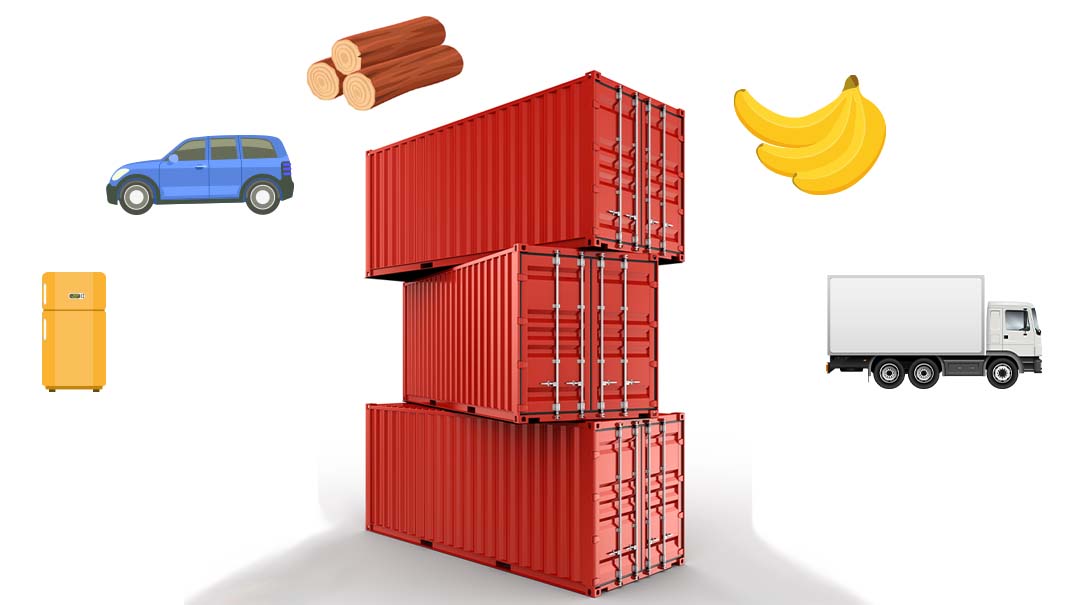The Great Supply Chain Mess

Supply chains are broken and we'll all feel the pain

First it was a shortage of computer chips and cars, then lumber prices in the US soared, and then came a fuel crisis in southern England.
But the most visible symbol of the supply chain crisis pushing up prices across the developed world is now the container ship flotilla outside the ports of Los Angeles and Long Beach on America’s West Coast.
With over 70 of the gargantuan vessels idling offshore — and America’s holiday shopping in their holds — global supply chains have gone from snore-inducing specialty to kitchen table issue.
So, what is the source of the global snarl-up, and are there any quick fixes? With surging demand meeting Covid restrictions and long-term supply-chain problems, it looks like it'll be a while before shelves are restocked from Los Angeles to London.
Scale
How bad can ship delays really be?
First, the scale of the problem. International shipping is measured in TEUs (Twenty-foot Equivalent Units, based on the standard 20-foot small shipping container), and the average container ship packs about 21,000 of these. According to the SeaRates blog, a TEU can load up to two SUVs, 50 to 60 fridges, or 48,000 bananas. So the marine snarl on America’s West Coast is equivalent to:
3 million cars
76 million fridges
73 billion bananas
Epicenters
With 2.4 million TEUs waiting to be offloaded globally, this is clearly not just an American problem, but it helps to understand where the blockages are concentrated in Western terms:
Los Angeles–Long Beach handles 40% of America’s shipping and the bulk of its Asian trade, now with a 73-ship backlog.
Savannah, Georgia on America's East Coast has a backlog of 80,000 containers and 25 ships.
Felixstowe, England ships 36% of the UK’s freight, now limiting incoming ships.
Shanghai and Ningbo ports in China are the world’s busiest, and as of late September, over 200 ships were waiting to unload — victims of a container shortage and week-long quarantine regime.
Triggers
Demand surge
Driving the pile-up, says the World Shipping Council, an industry body, is demand. “Of the past 12 months, 11 have had a year-on-year growth in spending on consumer goods of over 10%. To put this into perspective, in the 18 years before the pandemic, the average growth rate was 4.7%.”
Save then spend
Behind that splurge, says McKinsey, are a savings glut last year as lockdowns and stimulus payments doubled US households’ savings compared to 2019. That cash was spent on consumer goods as Americans stayed home and ordered stuff online.
Supply dive
But, according to the Association for Supply Chain Management, sky-high demand has met a supply crunch exacerbated by Covid and immigration restrictions. Two examples:
- Last month, the Malaysian Rubber Glove Manufacturers Association asked local government to allow foreign workers into the country to help fill 25,000 vacant jobs.
- In the United Kingdom, the government will override Brexit-era quotas to permit foreign workers for the last three months of the year to address shortages in manufacturing, shipping, agriculture, and food services.
Critical
Planning to replace your car or buy a garden shed? It might be wise to wait. Shortages of both are a sign of how shortages are now affecting both low and high tech.
Computer chips are found in their hundreds in cars, and obviously computers and cell phones. The chip crunch has been with us most of the year but now Toyota is slashing production worldwide due to the shortage.
Lumber Prices of wood have quadrupled in the UK, as shortages in the US constrict exports.
Haulage
Truckers of the world
In addition to shipping, plus supply and demand factors, trucks are the next culprit. The UK’s fuel crisis a few weeks ago was caused by a shortfall in truck drivers. That is actually a Europe and America-wide problem, contributing to the mountains of containers piling up in ports.
America is 60,000 truckers short, explained by an average age of 59
Britain needs 100,000 truckers (culprits are Brexit and Covid, which have sent foreign drivers home)
Europe continent-wide, the shortfall is estimated at 400,000
Strategy
What (besides panicking) is the White House doing?
- Demanded that the LA and neighboring Long Beach ports operate 24 hours a day, up from 16.
- Asked firms such as FedEx, UPS, Walmart, Samsung, Target, and Home Depot to work night shifts
- Convened labor unions who have committed to providing the necessary workers.
Outlook
“A bird in the hand is better than 71 waiting off Long Beach.”
This tweet from Bjorn Vang Jensen, vice president of global supply chains at Sea Intelligence, urging consumers to grab their holiday presents now, sums up the dire short-term prospects. The Great Supply Chain Mess of 2021 is destined to shed its moniker as it stretches deep into next year.
(Originally featured in Mishpacha, Issue 882)
Oops! We could not locate your form.







